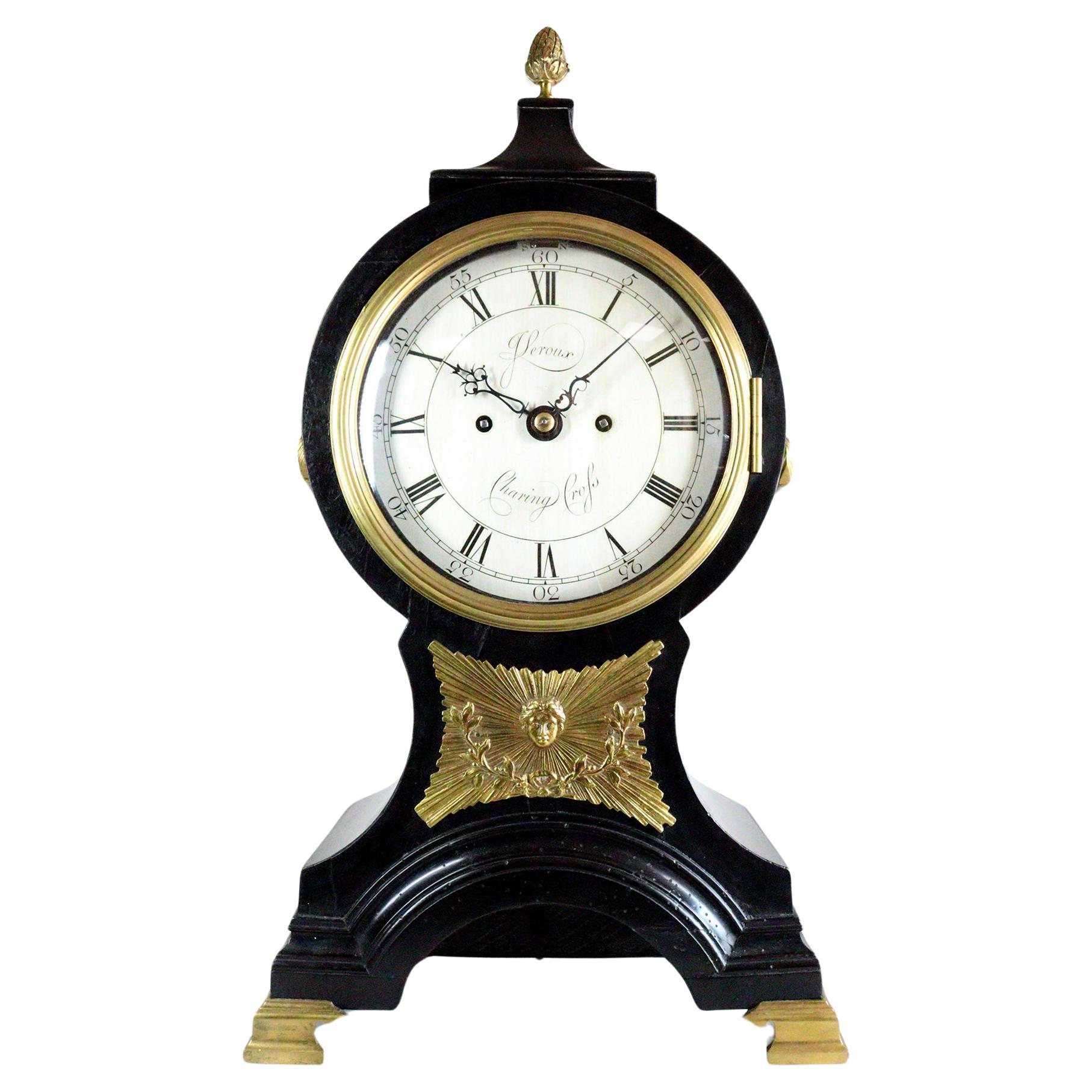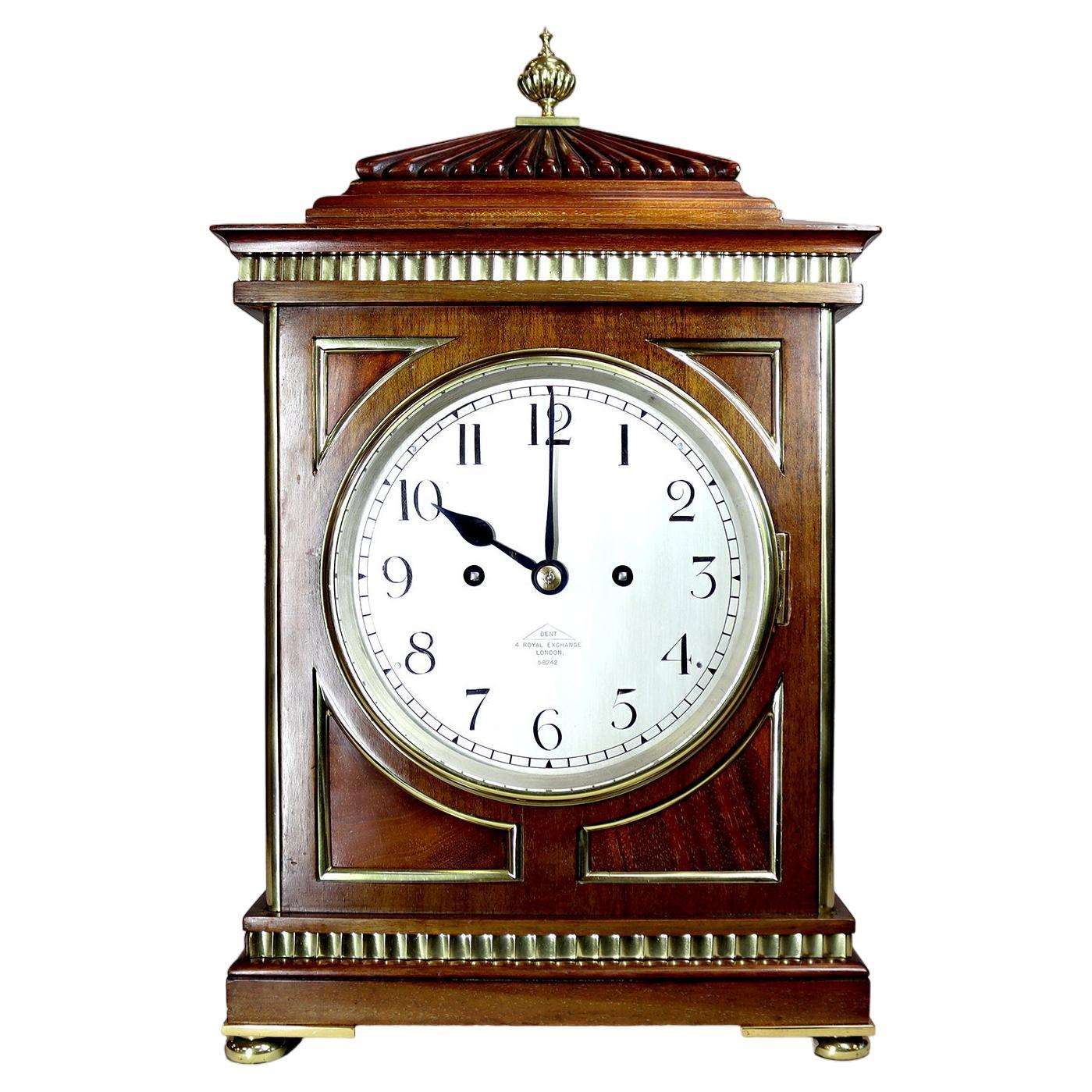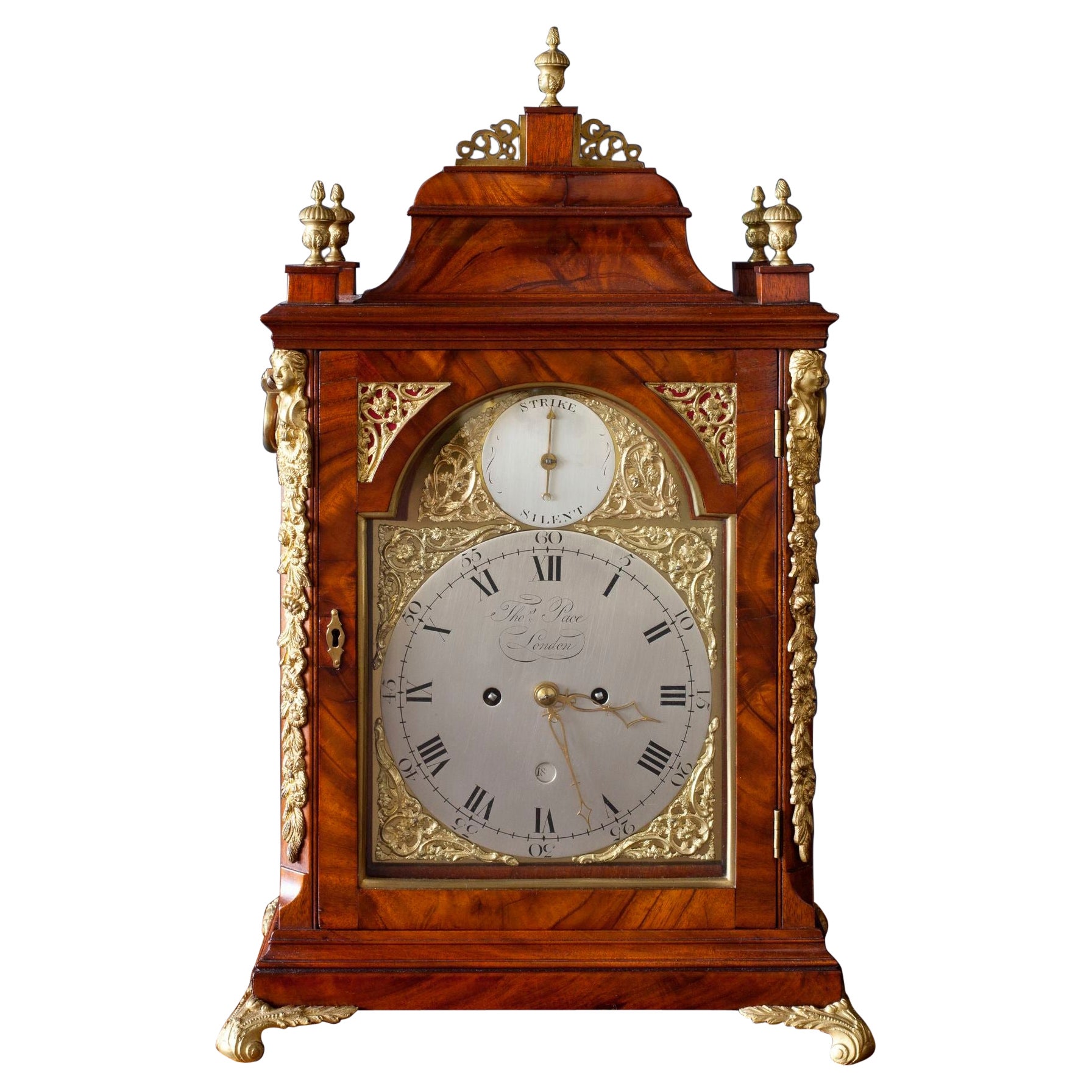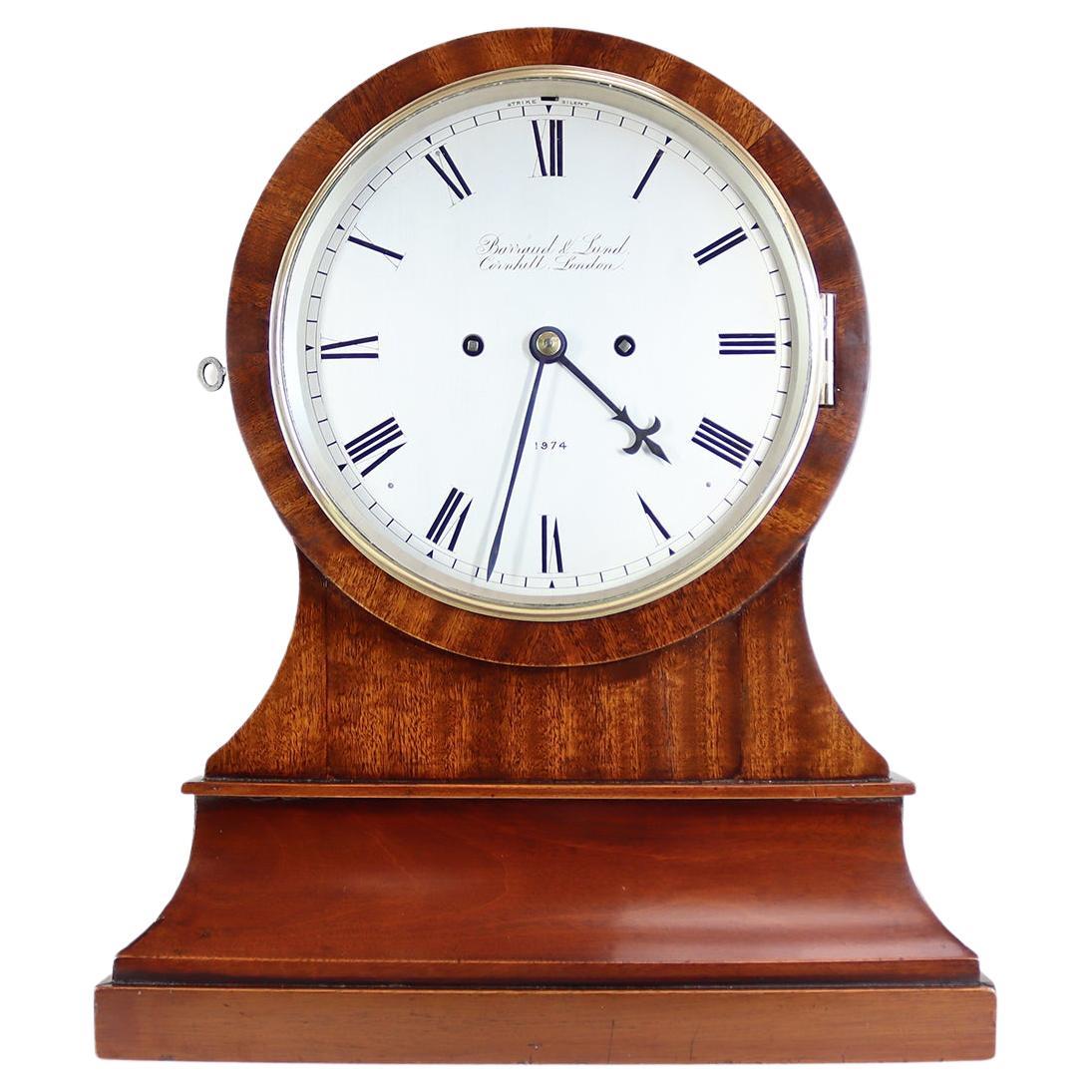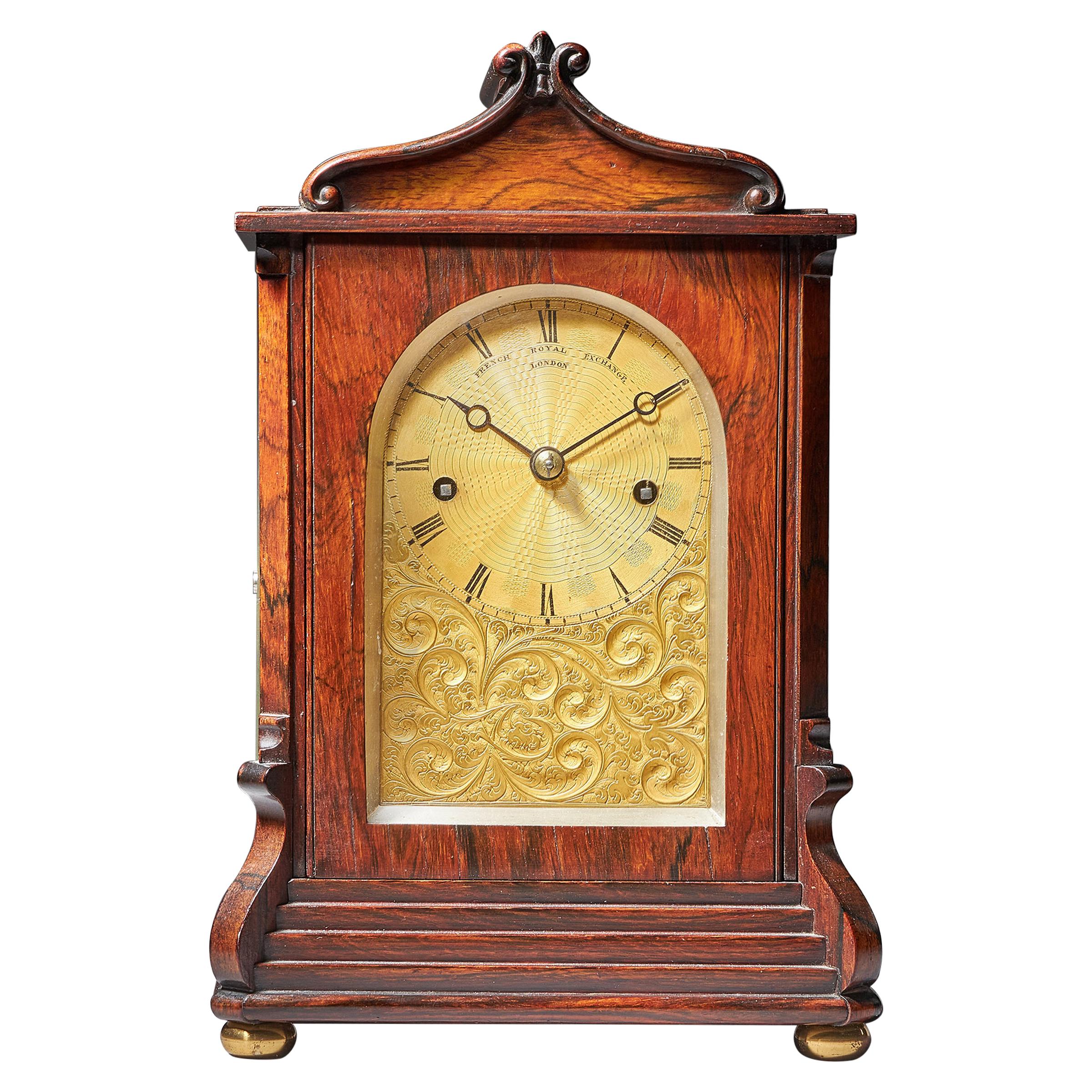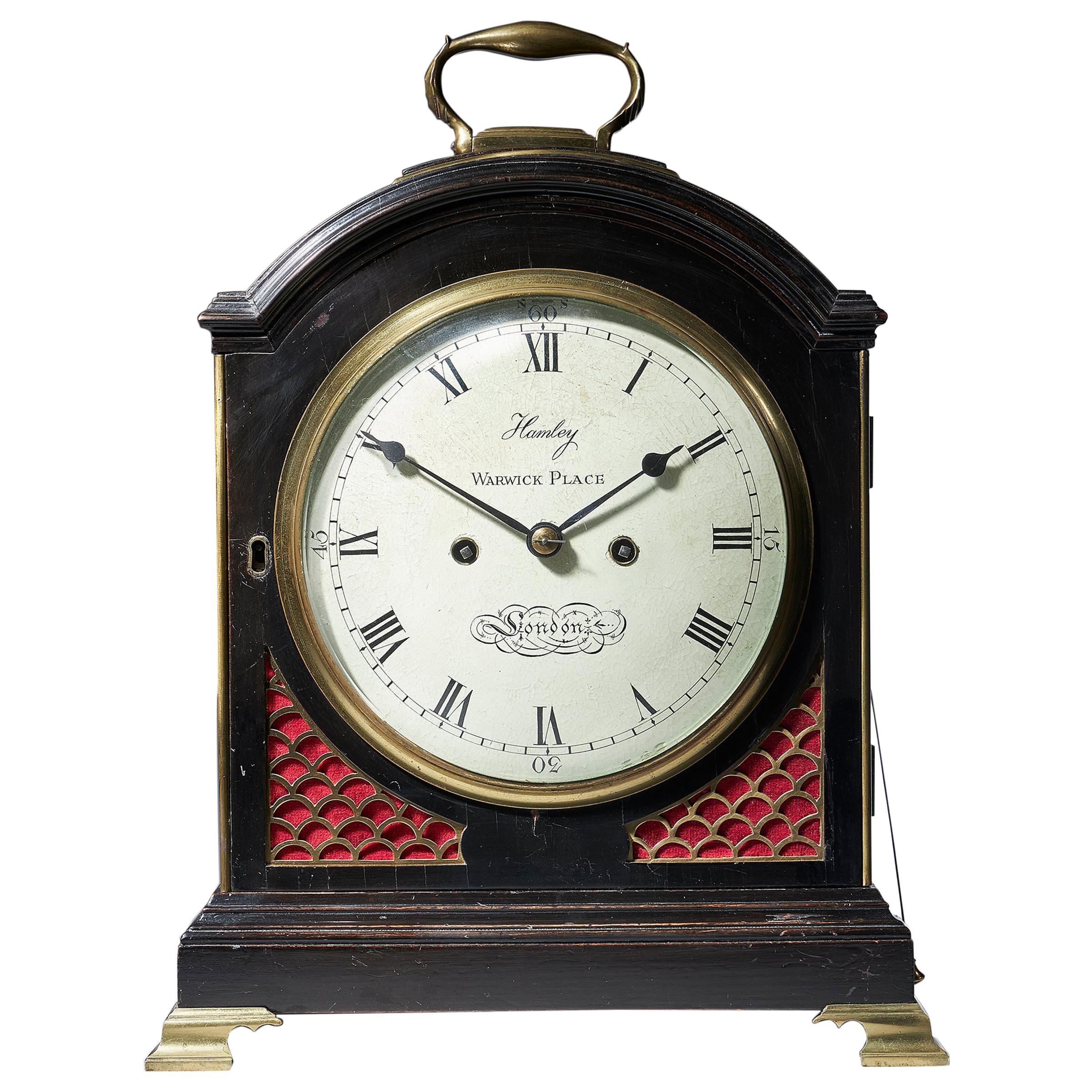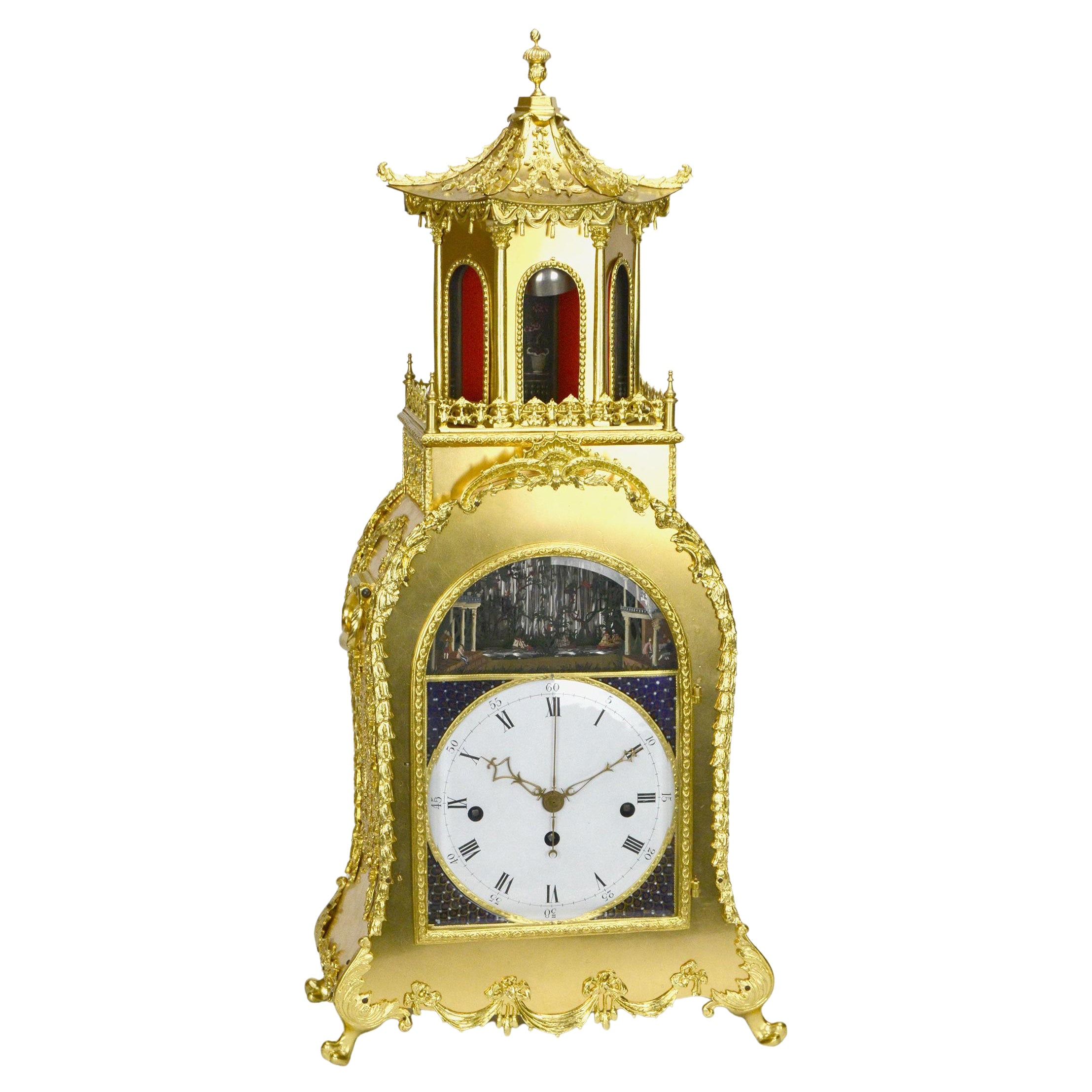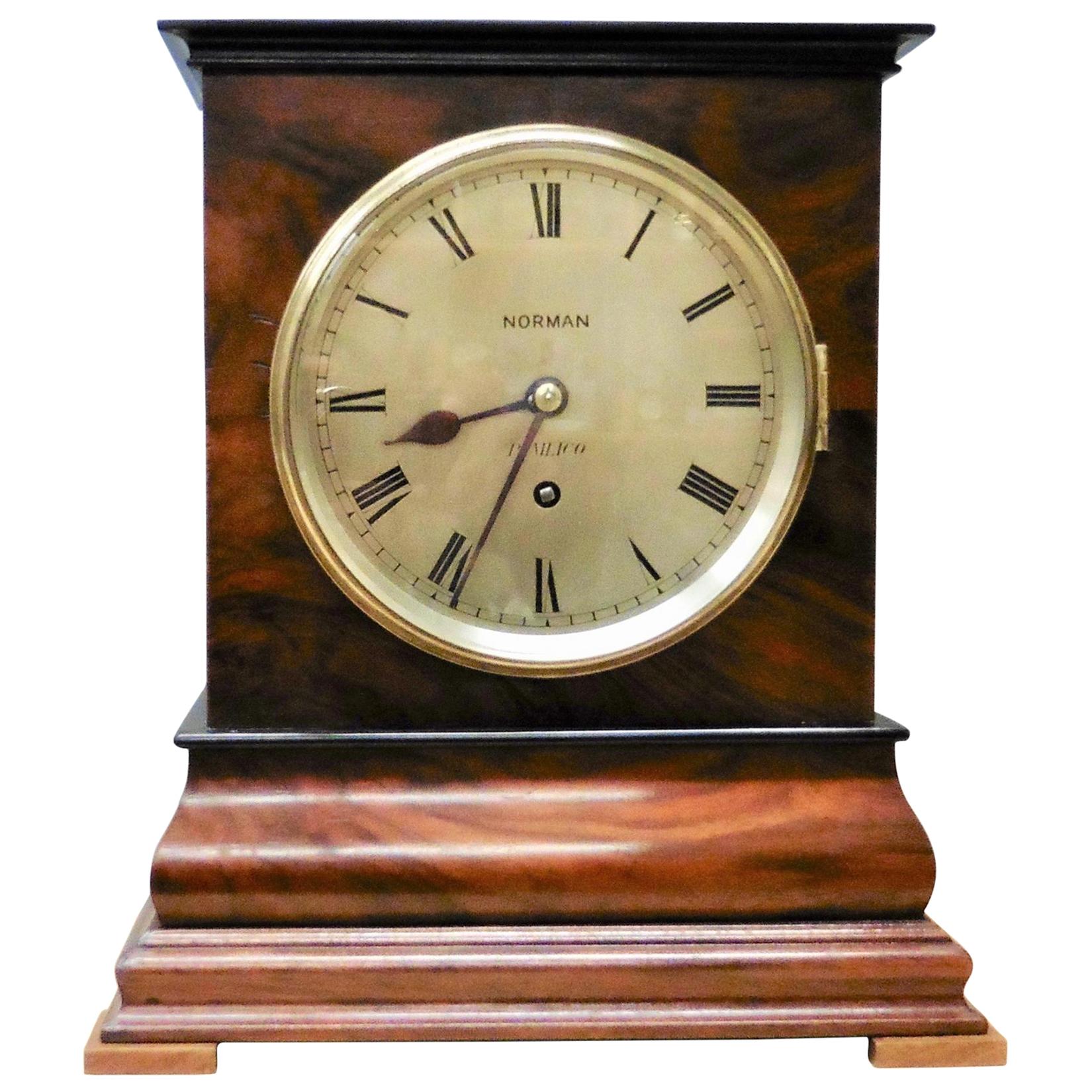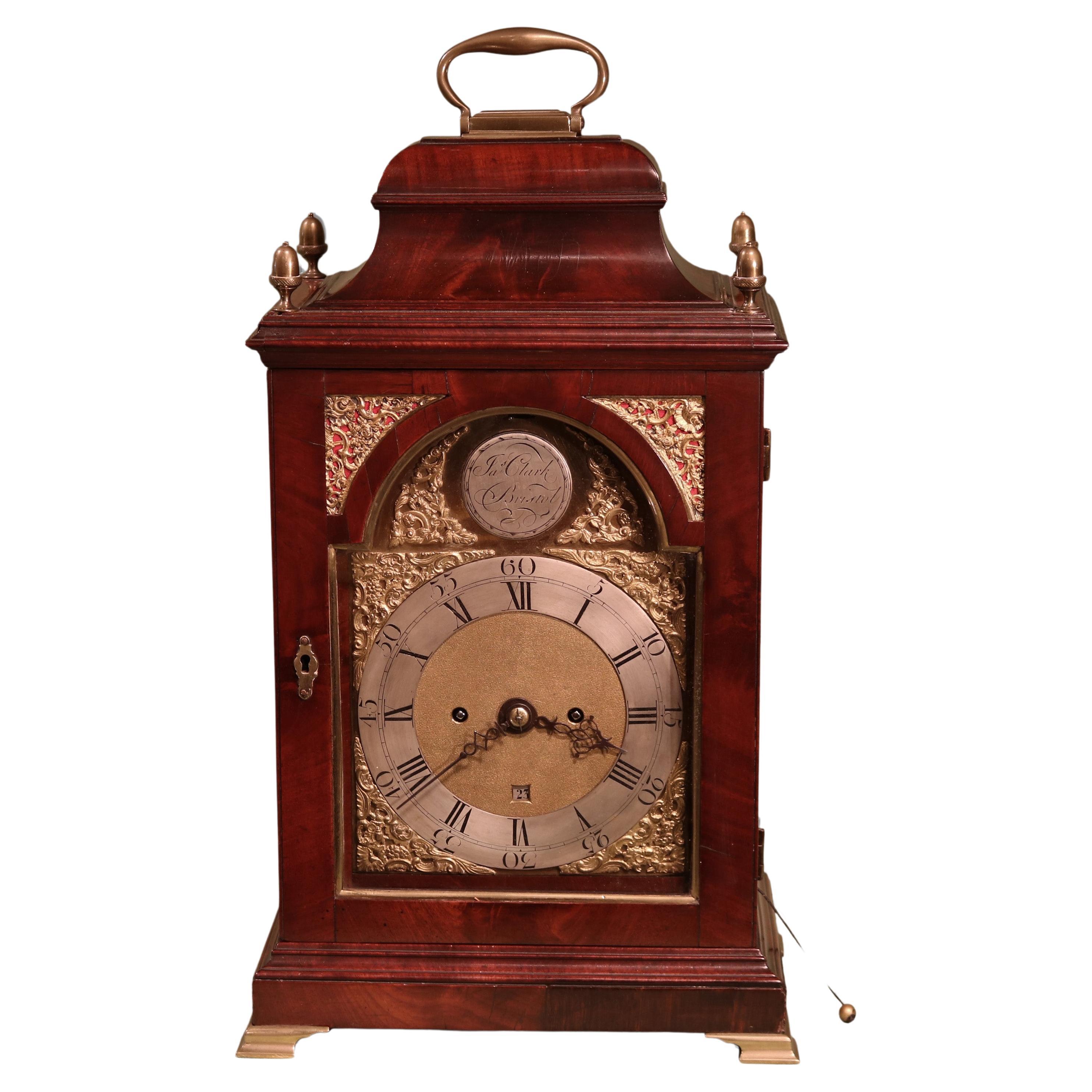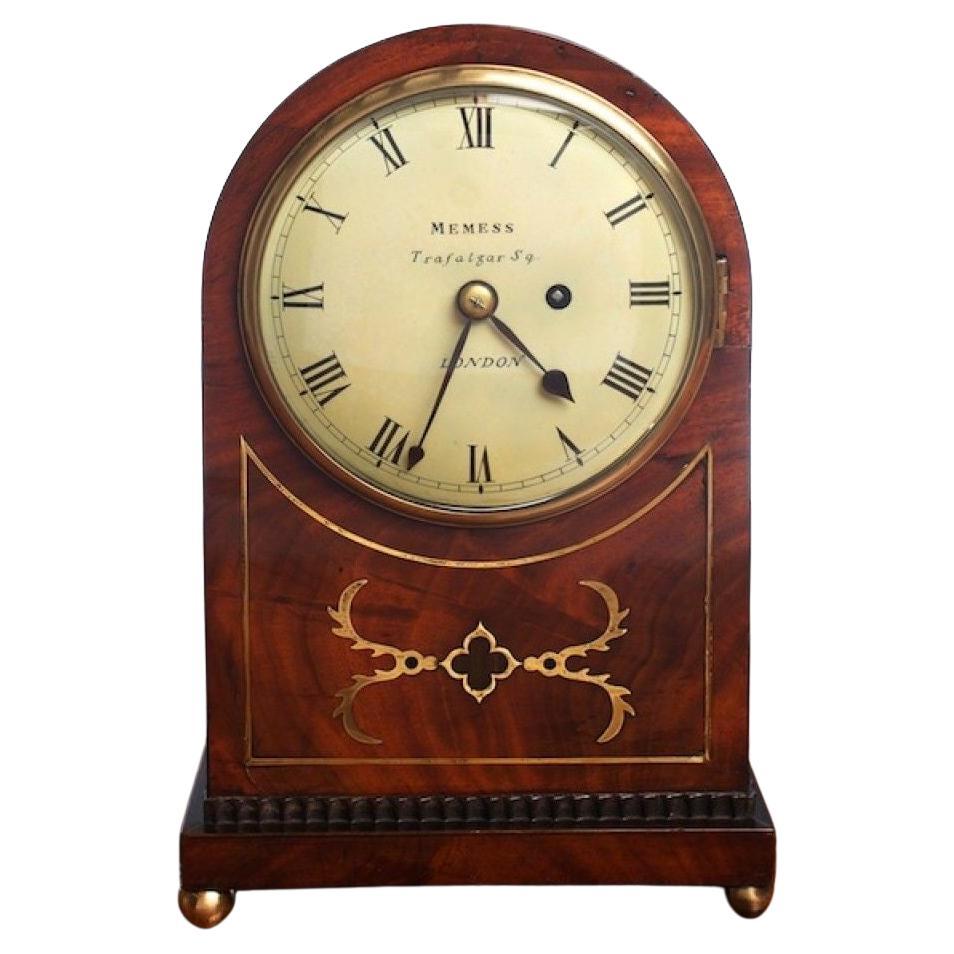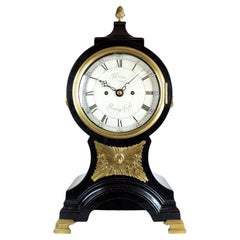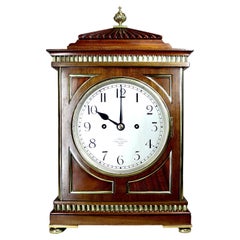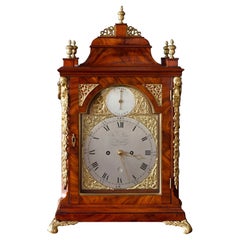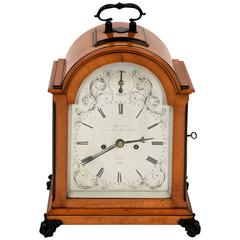
George IV Satinwood Veneered Striking Twin Fusee Bracket Clock
View Similar Items
1 of 9
George IV Satinwood Veneered Striking Twin Fusee Bracket Clock
About the Item
- Creator:Payne and Co. 1 (Clockmaker)
- Dimensions:Height: 17 in (43.18 cm)Width: 10.25 in (26.04 cm)Depth: 7.5 in (19.05 cm)
- Sold As:Set of 2
- Style:George IV (Of the Period)
- Materials and Techniques:
- Place of Origin:
- Period:
- Date of Manufacture:circa 1830
- Condition:Wear consistent with age and use. General wear to case consistent with age . surface scratches to silver dial consistent with age and general wear.
- Seller Location:By, GB
- Reference Number:1stDibs: LU102525306553
You May Also Like
- John Leroux, London. Twin Fusee Bracket ClockBy John LerouxLocated in Amersham, GBAn 18th century balloon shaped bracket or table clock by John Leroux of Charing Cross, dating from circa 1790. The waisted case surmounted by a brass pineapple finial over a drum hou...Category
Antique 18th Century English George III Mantel Clocks
MaterialsBrass
- A Twin Fusee Bracket Clock By DentBy DentLocated in Amersham, GBA striking two train bracket clock of exceptional quality by one of the great nineteenth century makers. The eight day twin fusee movement strikes on a blued steel gong behind a silvered arabic dial, signed Dent and numbered 58242 on both th dial and the back plate. Housed in a solid mahogany case with brass mounts and a gadrooned pergoda top surmounted by an acorn finial, and supported by bun feet. The sides ar pierced with attractive fish scale sound vents lined with dark blue velvet. The movement and case are both of remarkable quality, as you would expect from a clock made by Dent. The history of Dent & Co. spans three centuries of precision watch and clock making in Great Britain. Established in 1814 by Edward J. Dent, the company embraced the Victorian fervour for technological innovation and created precision chronometers to navigate the Royal Navy and guide some of the most intrepid explorers on their voyages. The British Empire was in full expansion and its maritime tradition had produced some remarkable technological breakthroughs from the late 18th century. Propelling the impetus of Britain’s primacy, Dent proved a key player in Victorian horological history manufacturing the Standard Clock at the Royal Observatory, Greenwich which was to keep “Greenwich Mean Time” the time to which all others in the Empire were referred (better known today as G.M.T.) and continued to do so until replaced by an electronic clock in 1946. Dent also made probably the most famous clock in the world - the Great Clock for the Houses of Parliament, familiarly known as Big Ben. Dent’s reputation soared and their chronometers accompanied some of the century's most influential and colourful explorers. Dent chronometer...Category
Antique Early 1900s English High Victorian Mantel Clocks
MaterialsBrass, Steel
- George III Mahogany Twin Fusee Verge Bracket Clock by Thomas Pace, LondonBy Thomas PaceLocated in Norwich, GBGeorge III Bell Top Bracket Clock Fine flame mahogany case with ormolu mounts and ormolu caryatids standing on bracket feet. Silvered dial with subsidiary dial for strike/silent,...Category
Antique 1780s English George III Table Clocks and Desk Clocks
MaterialsMahogany
- Twin Fusee Bracket Clock By Barraud And LundLocated in Amersham, GBA striking drum head bracket clock by Barraud and Lund of exceptional quality. The case is made of quarter sawn mahogany with a beautifully crisp silv...Category
Antique Mid-19th Century English Victorian Mantel Clocks
MaterialsBrass
- George III Mahogany English Fusee Bracket Clock by William Chater, LondonLocated in Norwich, GBGeorge III Bracket Clock. Stunning mahogany case with Cupola top surmounted by a ‘pineapple’ finial, profusely inlaid with brass, fishscal...Category
Antique 1810s English George III Table Clocks and Desk Clocks
MaterialsMahogany
- Striking George IV Eight-Day Rosewood Pagoda Library Clock by French, LondonBy Santiago James Moore FrenchLocated in Oxfordshire, United KingdomThis lovely small library clock has a spring-driven eight-day twin chain-fusee movement with going and striking trains. The going train has anchor escapement with a short pendulum and stirrup regulation to facilitate adjusting the timing, which is accessible from the back. The rack striking indicates the hours of a gently sounding bell, which can be repeated at all times by pulling a cord to the side of the case. The elegant chased and engraved arched gilt brass dial has a Roman chapter ring with five-minute and minute divisions. The maker has signed the dial above the middle: FRENCH ROYAL EXCHANGE...Category
Antique Early 19th Century George IV Mantel Clocks
MaterialsBrass
Recently Viewed
View AllMore Ways To Browse
William Iv Bracket Clock
Ebony Bracket Clock
William Bond Bronze
Seth Thomas Clock Company On Sale
Phinney Walker Clock
Seth Thomas Gold Watch
Vintage Stainless Steel Mens Wristwatches
Vintage Swank Watch
Patek Philippe Nautilus Jumbo White Dial
Patek Philippe Solar System Watch
Daniel Quare
Dario Serio
Doxa Antique
Ferrari Clock
J Weiland
Mette Kiellerup
Patek Philippe Space
Retro Flip Clock Red
